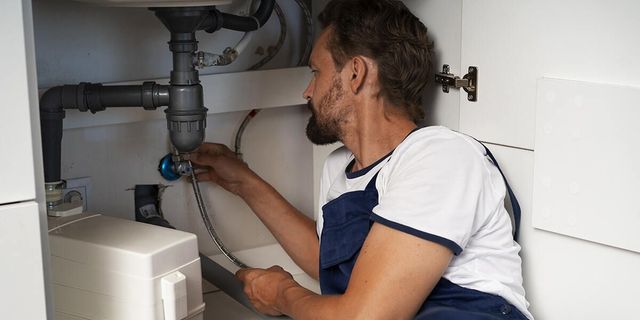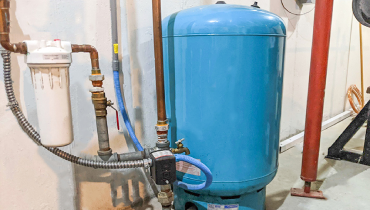Step-by-Step Methods for Solving Low Water Pressure in Your Home
Step-by-Step Methods for Solving Low Water Pressure in Your Home
Blog Article
Are you currently trying to locate help concerning 4 Ways to Troubleshoot Low Water Pressure?

Low tide pressure in your house can be an aggravating trouble, impacting every little thing from showering to cleaning dishes. If you're experiencing weak water circulation, there are several possible reasons and solutions to check out. In this overview, we'll discuss common reasons for low tide stress and practical steps to attend to the concern effectively.
Introduction to Low Tide Stress
Low tide stress takes place when the circulation of water from your faucets, showers, and other fixtures is weaker than typical. This can make daily tasks a lot more difficult and much less effective. Recognizing the sources of low tide stress is important to locating the right remedy.
Usual Root Causes Of Low Water Pressure
Pipe Obstructions
With time, pipelines can end up being clogged with mineral deposits, sediment, or particles, restricting the flow of water. This is a typical concern in older homes with galvanized steel pipes.
Corrosion
Corrosion within pipelines can cause leakages and decreased water pressure. Corrosion buildup can constrict water circulation, especially in aging plumbing systems.
Faulty Stress Regulators
Stress regulatory authorities are accountable for maintaining consistent water stress in your home. If they malfunction, it can cause low tide pressure or unequal circulation throughout your home.
Community Supply Of Water Issues
Occasionally, the issue lies outside your home. Local water system issues, such as main line leakages or upkeep work, can briefly lower water pressure in your area.
How to Identify Low Water Stress
Inspecting Taps and Components
Beginning by checking the water pressure at various taps and fixtures throughout your home. If the concern is separated to details locations, it may indicate local issues.
Checking Pipes
Examine noticeable pipes for signs of leakages, rust, or clogs. Take notice of any type of uncommon noises, such as knocking or rattling pipes, which can indicate concerns within the plumbing system.
Consulting with a Plumber
If you're unable to identify the reason for low tide pressure, consider employing a professional plumber to carry out a comprehensive assessment. They can recognize underlying issues and recommend suitable options.
Do It Yourself Solutions to Fix Low Tide Stress
Cleaning Up Aerators and Showerheads
Natural resources can gather in aerators and showerheads, reducing water flow. Eliminate and clean up these elements consistently to improve water stress.
Flushing Water Heater
Sediment accumulation in the water heater can limit flow and minimize efficiency. Flushing the container occasionally helps remove sediment and keep ideal performance.
Examining Pressure Regulator
Make sure that the stress regulatory authority is working properly. Readjusting or replacing the regulatory authority can assist restore correct water pressure throughout your home.
Cleaning Clogs in Water Lines
For minor obstructions, try using a plumbing snake or chemical drain cleaner to clear blockages in pipes. Beware when using chemicals and comply with safety and security guidelines.
When to Call a Professional Plumber
If DIY efforts stop working to fix the issue or if you think considerable plumbing problems, it's best to look for assistance from an accredited plumber. They have the experience and devices to resolve complicated concerns securely and efficiently.
Preventive Measures to Maintain Water Pressure
Regular Maintenance
Schedule routine upkeep for your plumbing system to stop concerns such as deterioration, leakages, and obstructions. Addressing small troubles early can help stay clear of more substantial repairs later.
Mounting a Stress Booster
Consider mounting a stress booster pump to boost water pressure in locations with regularly low flow. This can be specifically valuable for multi-story homes or buildings with high-demand fixtures.
Surveillance Water Use
Be mindful of water use routines and avoid overtaxing the plumbing system. Basic adjustments, such as shocking showers and washing tons, can help maintain adequate water pressure.
Conclusion
Handling low tide pressure can be discouraging, yet identifying the underlying causes and executing appropriate solutions can recover ideal circulation throughout your home. Whether it's cleaning aerators, inspecting pipelines, or speaking with a plumber, taking aggressive steps can make certain a stable supply of water for your everyday demands.
How to Fix Low Water Pressure In Your Home
Municipal Water Supply Issues
Scheduled maintenance, high demand, and water main breaks are all potential causes for low water pressure within a city or county’s water lines. While there’s not much you can do to personally fix a problem with your city or county’s water supply system, you can play a big role in documenting the issue and alerting those who can.
How to fix it:
Ask your neighbors if they are experiencing any issues with low water pressure. If multiple homes are affected, it’s likely related to the city’s water line.
Contact the local Water Authority to see if there is any maintenance taking place that might be affecting your supply. Also let them know of your specific issues. If other homeowners report the same issues, they’ll know that there could be a larger issue to look into.
Faulty Fixtures
A damaged or clogged shower head, faucet or appliance is the first thing we’d suggest checking, especially if low water pressure appears to be isolated to a specific area of your home.
How to fix it:
First, turn off the main water supply to your home.
Check the affected appliances for build-up or debris. In the case of a faucet, you can simply unscrew the aerator at the tip of the faucet. Showerheads should be fully detached from the water pipe.
While the appliances are detached, you may want to check the water supply to determine if the fixtures were in fact the issue.
To clean, soak the showerhead or aerator in vinegar and brush off any visible debris.
Reattach the fixtures and check the water pressure again. If it is still low, there is likely a deeper issue at hand, which can be determined by a professional plumber.
Pipe Obstructions
Mineral deposits, rust or other debris within water pipes can lead to blockages or corrosion over time.
How to fix it:
When you think of a clog, you probably think of a drain clog. While there are many DIY solutions to clearing a drain, clogs in a water pipe will almost always require the help of a professional plumber. A plumber will be able to locate the affected pipe and clean out any debris or mineral deposit buildup. In severe cases, the pipe may need to be replaced. Your plumber might also recommend a water softening system to remove the minerals from your home’s water supply that can contribute to pipe blockages over time.
Plumbing Leak
Undetected water line leaks can divert water away from your residential pipes, reducing the water pressure in your fixtures.
How to fix it:
Check your water meter by turning off all water sources and monitoring the meter for any movement, which could be a clear indicator of a potential leak.
Check all visible pipes for signs of leaking, including water stains, active dripping or damp spots around the pipe.
Inspect fixtures, including faucets and showerheads, for any drips.
Test the pressure but recording the pressure with the main water valve shut off. Leave off for a few hours and test again. A significant drop in pressure is a clear sign of a leak.
https://kiddcoplumbing.com/plumbing-blog/how-to-fix-low-water-pressure/

How to Fix Low Water Pressure In Your Home
Municipal Water Supply Issues
Scheduled maintenance, high demand, and water main breaks are all potential causes for low water pressure within a city or county’s water lines. While there’s not much you can do to personally fix a problem with your city or county’s water supply system, you can play a big role in documenting the issue and alerting those who can.
How to fix it:
Faulty Fixtures
A damaged or clogged shower head, faucet or appliance is the first thing we’d suggest checking, especially if low water pressure appears to be isolated to a specific area of your home.
How to fix it:
Pipe Obstructions
Mineral deposits, rust or other debris within water pipes can lead to blockages or corrosion over time.
How to fix it:
When you think of a clog, you probably think of a drain clog. While there are many DIY solutions to clearing a drain, clogs in a water pipe will almost always require the help of a professional plumber. A plumber will be able to locate the affected pipe and clean out any debris or mineral deposit buildup. In severe cases, the pipe may need to be replaced. Your plumber might also recommend a water softening system to remove the minerals from your home’s water supply that can contribute to pipe blockages over time.
Plumbing Leak
Undetected water line leaks can divert water away from your residential pipes, reducing the water pressure in your fixtures.
How to fix it:
https://kiddcoplumbing.com/plumbing-blog/how-to-fix-low-water-pressure/
I am just very eager about 9 Reasons for Low Water Pressure in Your House and I really hope you enjoyed my article. So long as you appreciated our blog entry please consider to share it. I am grateful for being here. Don't hesitate to check our blog back soon.
Call Today Report this page